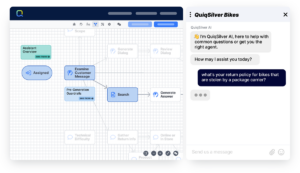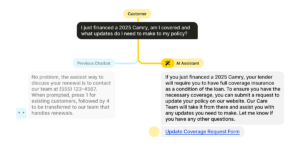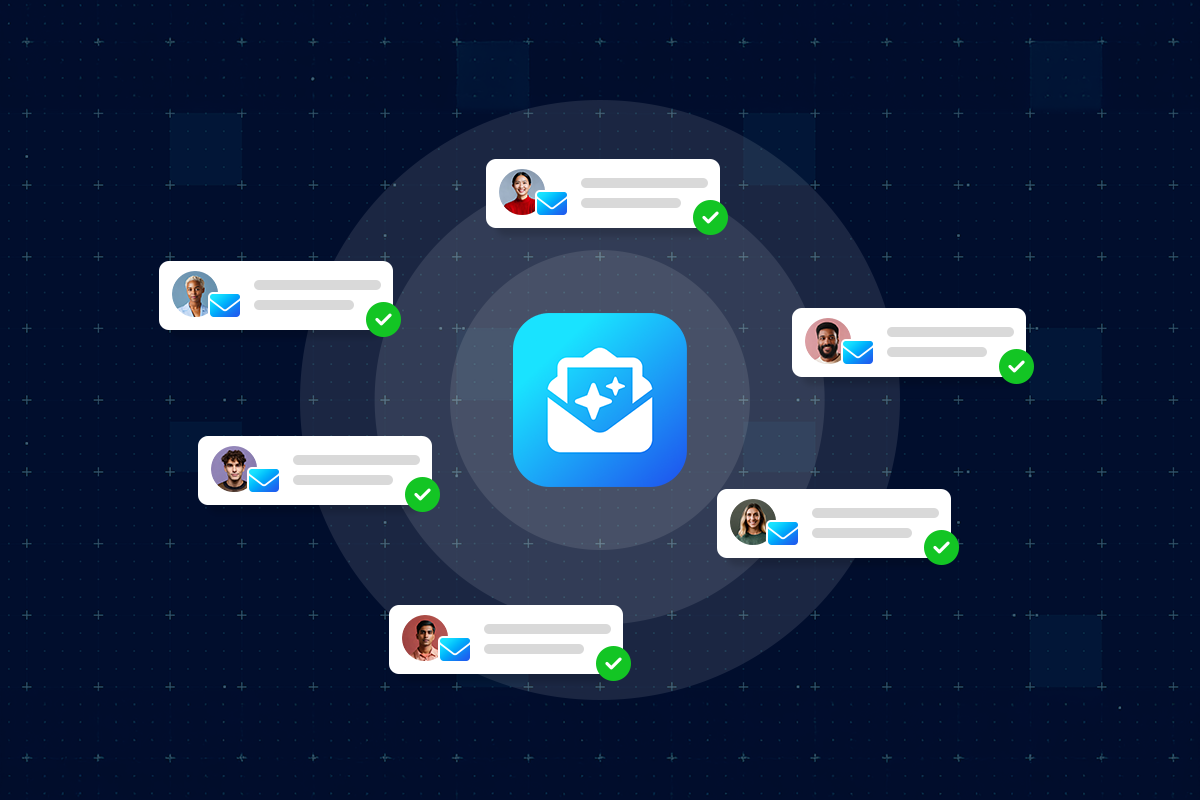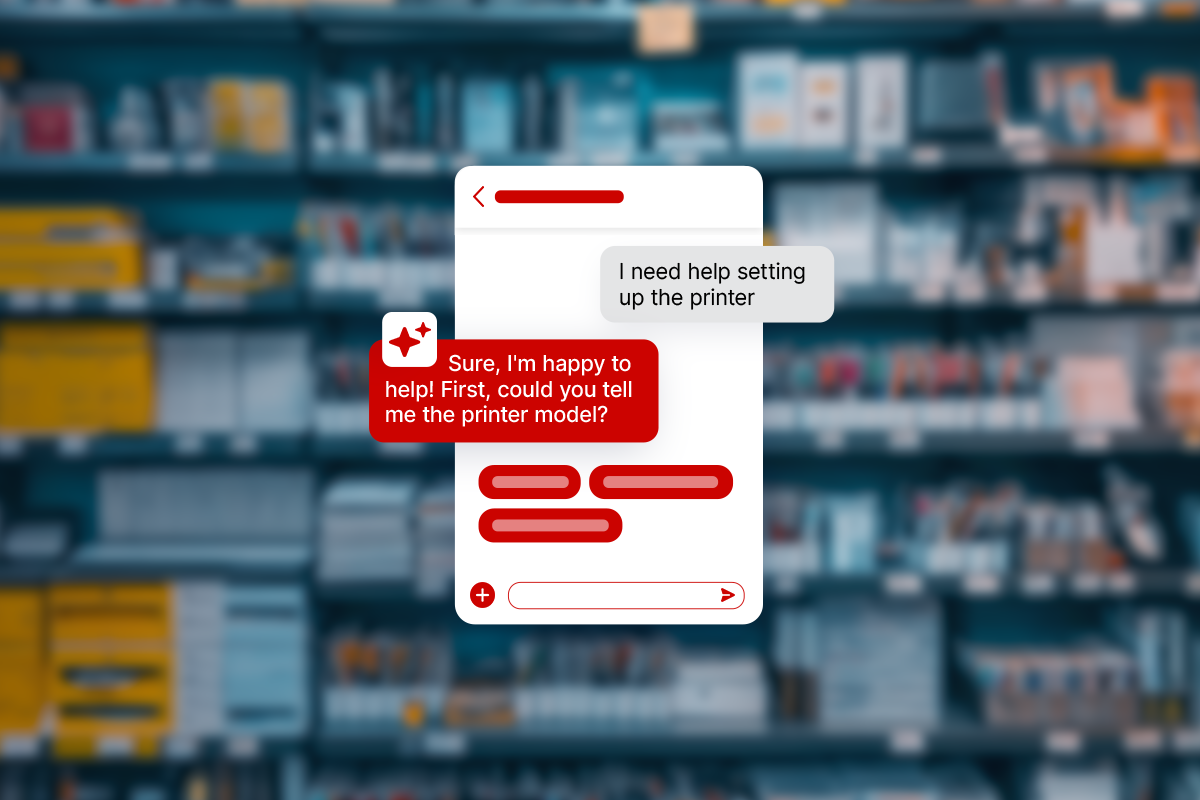As author, speaker, and customer experience expert Dan Gingiss wrote in his book The Experience Maker, “Most companies must realize that they are no longer competing against the guy down the street or the brand that sells similar products. Instead, they’re competing with every other experience a customer has.”
That’s why so many CX leaders were (cautiously!) optimistic when Generative AI (GenAI) hit the scene, promising to provide instant, round-the-clock responses and faster issue resolutions, automate personalization at scale, and free agents to focus on more complex issues. So much so that a whopping 80% of companies worldwide now have chatbots on their websites.
Yet despite all the hype and good intentions, a recent survey showed that consumers give their chatbot experiences an average rating of 6.4/10 — which isn’t a passing grade in school, and certainly won’t cut it in business.
So why have chatbots fallen so short of company and consumer expectations? The short answer is because they’re not AI agents. Chatbots rely on rigid, rule-based systems. They struggle to understand context and adapt to complex or nuanced questions. Even the best conversational AI chatbot doesn’t have what it takes to enable CX leaders to create seamless customer journeys. This is why they so often fail at driving outcomes like revenue and CSAT.
Let’s look at the most impactful differences between these two AI for CX solutions, including why even the best conversational AI chatbots are failing CX teams and their customers — and how AI agents are changing the game.
Chatbots: First-generation AI and Intent-based Responses
AI is advancing at lightning speed, so it should come as no surprise that many vendors are having trouble keeping up. The truth is that most AI for CX tools still offer chatbots built on first-generation AI, rather than AI agents that are powered by the latest and greatest Large Language Models (LLMs).
This first-generation AI is rule-based and uses Natural Language Processing (NLP) to attempt to match users’ questions to specific, pre-defined queries and responses. In other words, CX teams must create lists of different ways users might pose the same question or request, or “intents.” AI does its best to determine which “intent” a user’s message aligns with, and then sends what has been labeled the “correct” corresponding response.

This approach can cause many problems that ultimately add friction to the customer journey and create frustrating brand experiences, including:
- Intent limitations: If a user asks a multi-part question (e.g. “Can I unsubscribe from your newsletter and have sales contact me?”), the bot will recognize and answer only one intent and ignore the other, which is insufficient.
- Ridged paths: If a user asks a question that the bot knows requires additional information, it will start the user down a rigid, predefined path to collect that information. If the user provides additional relevant details (e.g. “I would still like to receive customer-only emails”), the bot will continue to push them down this specific path before providing an answer.
On the other hand, if the user asks an unrelated follow-up question, the bot will zero in on this new “intent” and start the user down a new path, abandoning the previous flow without resolving their original inquiry. - Confusing intents: There are countless ways to phrase the same request, so the likelihood of a user’s inquiry not matching a predefined intent is high (e.g. “I want you to delete my contact info!”). In this case, the bot doesn’t know what to do and must escalate to a live agent — or worse, it misunderstands the user’s intent and sends the wrong response.
- Conflicting intents: Because similar words and phrases can appear across unrelated issues, there is often contention across predefined intents (e.g. “I accidentally unsubscribed from your newsletter.”). Even the best conversational AI chatbot is likely to match the user’s intent with the wrong response and deliver an unrelated and seemingly nonsensical answer — an issue similar to hallucinations.
Some AI for CX vendors claim their chatbots use the most advanced GenAI. However, they are really using only a fraction of an LLM’s power to generate a response from a knowledge base, rather than crafting personalized answers to specific questions. But because they still use the same outdated, intent-based process to determine the user’s request, the LLM will still struggle to generate a sufficient, appropriate response — if the issue isn’t escalated to a live agent first, that is.
AI Agents: Cutting-edge Models with Reasoning Capabilities
Top AI for CX vendors use the latest and greatest LLMs to power every step of the customer interaction, not just at the end to generate a response. This results in a much more accurate, personalized, and empathetic experience, enabling them to provide clients with AI agents — not chatbots.

Rather than relying on rigid intent classification, AI agents use LLMs to comprehend language and genuinely understand a user’s request, much like humans do. They can also contextualize the question and append the conversation with additional attributes accessed from other CX systems, such as a person’s location or whether they are an existing customer (more on that in this guide).
This level of reasoning is achieved through business logic, which guides the conversation flow through a series of “pre-generation checks” that happen in the background in mere seconds. These require the LLM to first answer “questions about the question” before generating a response, including if the request is in scope, sensitive in nature, about a specific product or service, or requires additional information to answer effectively.
Sidenote!
The best AI for CX vendors never use client data to train LLMs to “invent” answers to questions about their products or services. Instead, the LLMs must generate responses using information from specific, trusted knowledge sources that the client has pre-approved.
This means AI agents harness the language and communication capabilities of GenAI only, greatly reducing the need for CX leaders to worry about data security or hallucinations. You can go here to learn more.

The same process happens after the LLM has generated a response (“post-generation checks”), where the LLM must answer “questions about the answer” to ensure that it’s accurate, in context, on brand, etc. Leveraging the reasoning power of LLMs coupled with this conversational framework enables the AI agent to outperform even the best conversational AI chatbots in many key areas.
Providing sufficient answers to multi-part questions
Unlike a chatbot, the agent is not trying to map a specific question to a single, canned answer. Instead, it’s able to interpret the entirety of the user’s question, identify all relevant knowledge, and combine it to generate a comprehensive response that directly answers the user’s inquiry.
Dynamically answering unrelated questions and factoring in new information
AI agents will prompt users to provide additional information as needed to effectively respond to their requests. However, if the user volunteers additional information, the agent will factor this into the context of the larger conversation, rather than continuing to force them down a step-by-step path like a chatbot does. This effectively bypasses the need for many disambiguating questions.
Similarly, if a user asks an unrelated follow-up question, the agent will respond to the question without losing sight of the original inquiry, providing answers and maintaining the flow of the conversation while still collecting the information it needs to solve the original issue.
Understanding nuances
Unlike chatbots, next-gen AI agents excel at comprehending human language and picking up on nuances in user questions. Rather than having to identify a user’s intent and match it with the correct, predefined response, they can recognize that similar requests can be phrased differently, and that dissimilar questions may contain many of the same words. This allows them to flexibly understand users’ questions and identify the right knowledge to generate an accurate response without requiring an exact match.

It’s also worth noting that first-generation AI vendors often force clients to build a new chatbot for every channel: voice, SMS, Facebook Messenger, etc. Not only does this mean a lot of duplicate work for internal teams on the back end, but it can also lead to disjointed brand experiences on the front end. In contrast, next-generation AI for CX vendors allows clients to build a single agent and run it across multiple channels for a more seamless customer journey.
Is Your “Best-in-Class” AI Chatbot Killing Your Customer Journey?
Some 80% of customers say the experience a company provides is equally as important as its products and services. However, according to Gartner, more than half of large organizations have failed to unify customer engagement channels and provide a streamlined experience across them.
As you now know, even the best conversational AI chatbot will exacerbate rather than improve this issue. Our latest guide deep dives into more ways your chatbot is harming CX, from offering multi-channel-only support to measuring the wrong things, as well as the steps you can take to provide consumers with a more seamless journey. You can give it a read here!




